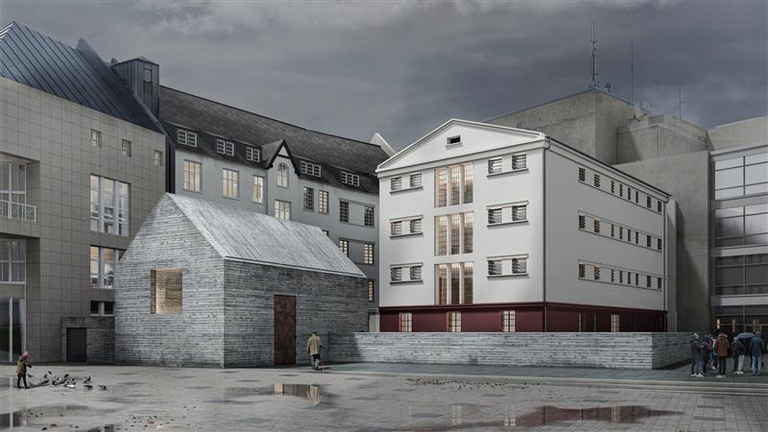Dortmund, Germany, March 10, 2025. For more than three decades, the Steinwache memorial and remembrance site in the German city of Dortmund has been a reminder of Germany’s dark Nazi past. With exhibitions and talks, it keeps alive the memory of Nazi persecution and resistance and the victims of the regime. Now there are plans for an extensive modernization of the memorial site, involving the remodeling and restoration of both the protected building and the exhibition. Around 19 million euros are being invested in the project, with works due to begin in June 2025 and expected to take around three years. The Steinwache museum will be closed to visitors during this time. However, talks and educational programs will continue to be offered at different locations. Dr. Markus Günnewig, Director of Steinwache memorial site, commented: “We want to preserve the memory of the crimes and victims of National Socialism for future generations.” Stuttgart-based Drees & Sommer SE specializes in construction and real estate. The experts of the consulting firm support the city of Dortmund with services.
The Steinwache was built in 1906 as a police station. A large prison added in 1928 was used by the Gestapo during the National Socialist regime. Markus Günnewig remarked: “During the Nazi era, the Steinwache was a place of persecution that was notorious in the region. People were tortured here and deported to concentration camps for political and racist reasons.” After the Second World War, the building initially continued to serve as a police station, and later as accommodation for homeless people. The Steinwache memorial and remembrance site was officially opened in 1992. Since then, an exhibition has documented the brutal acts and the history of the place. As Dr. Günnewig observed: “The exhibition was really excellent for its time, but it is now in urgent need of modernization.”
The planned work is intended to ensure that future generations also share the memory of the victims and are informed about Nazi crimes in a way that is in keeping with the times.
Restoring a Historic Site with Sensitivity
Preservation of a site of historic interest presents a particular challenge. Jana Oenning, project manager at Drees & Sommer and responsible for the planning and construction process, explains: “Project management in regard to protected buildings goes far beyond the usual aspects of construction project management. Specific requirements have to be met, and the existing buildings have to be treated with sensitivity. To achieve this, we have to bring planning processes and technical requirements into line with preservation aspects. Close consultation with the authorities involved in the protection of memorial sites and with technical experts is especially important.”
The aim of the restoration of the historical building is to bring the Steinwache as close as possible to its original state. The work involved in this includes restoring the concrete, the flooring, the exterior rendering and the windows. The 40 rooms in the building will also be restructured and the museum circuit rearranged in a design that will provide greater space and create a fitting memorial for the inmates held at the police detention center during the Nazi period.
New Exhibition and Reception Building
There are two central elements to the planned modernization of the Steinwache: the creation of a new permanent exhibition and the construction of a modern reception building. The new permanent exhibition will be dedicated to the history of the police detention center. The plan includes both refurbishment of the displays and a remodeling of the exhibition space.
A further focus of the project is the construction of a new reception building in keeping with the historic site. The new building comprises modern exhibition spaces and classrooms, which will extend the memorial site’s educational offering. The new premises for education purposes are especially important, as Dr. Günnewig explained: “School classes and other groups often come to us, so it’s important that we have facilities for them to withdraw to, where questions can be answered and issues examined in more depth, and where we can offer talks and activities. This will enable us to meet the current requirements for an extra-curricular learning environment on a site of special historical interest.”
